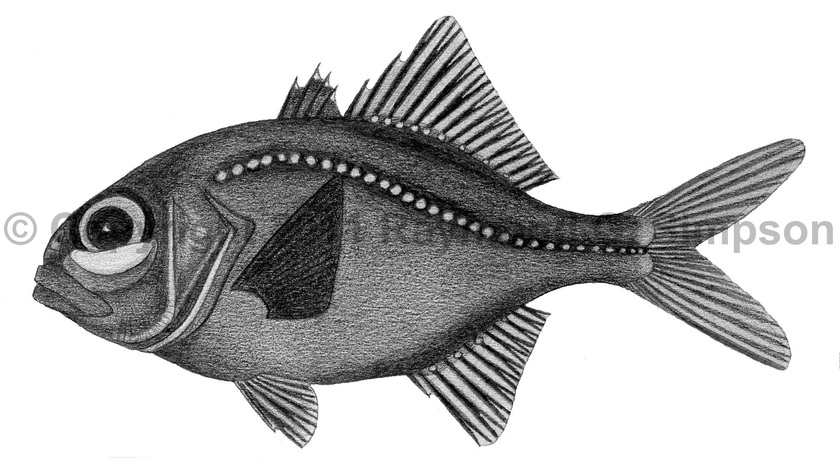
Common Name
Atlantic Flashlightfish
Year Described
Silvester & Fowler, 1926
Identification
Dorsal Fin: IV, II-14
Anal Fin: II, 10
Pelvic Fin: I, 6
Pectoral Fin: 16-17
Caudal Fin: 19 (principle)
Lateral Line: 32-34
Gill Rakers: 6-7 upper, 18-20 lower (first arch)
Vertebrae: 29 (15 precaudal)
Ventral Scutes: 7-9
Fairly deep bodied with a large head. Eye large. A large luminous organ underneath eye with an adjustable flap of black skin that can cover up the light organ. Snout short and blunt. Mouth reaches middle of orbit. Teeth small and conical. Branchiostegal rays number 8. Two dorsal fins with second much higher. Caudal fin forked. Body scales tiny (~140 rows). Scales at dorsal/anal fin base and on lateral line enlarged.
Color
Body and fin rays black. The enlarged lateral scales, ventral scutes, and the scales at the base of the dorsal/anal fin are contrasting white. Fin margins reflective to light. Light organ gives off blue-green luminescence.
Size
Maximum size to 110mm SL.
Habitat
Found on deep reefs and drop-offs from under 30m at night to over 100m during the day. Stays close to rocky reefs and caves. Probably uses its light organ to attract food.
Range
Caribbean Sea: scattered records from Jamaica, the Cayman Is., Puerto Rico, the Virgin Is., and Curacao.
References
Moore, J.A. 2002. Anomalopidae. In: FAO Species Identification Guide to Fishes of the Western Atlantic. (ed. Carpenter K), pp. 1182-1183. UN FAO Publishers, Rome.